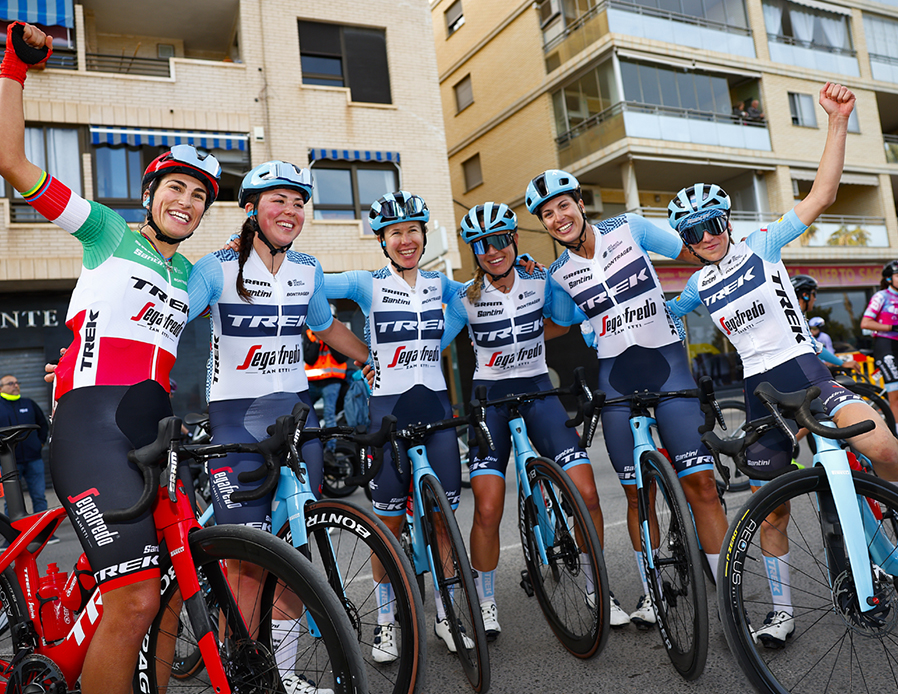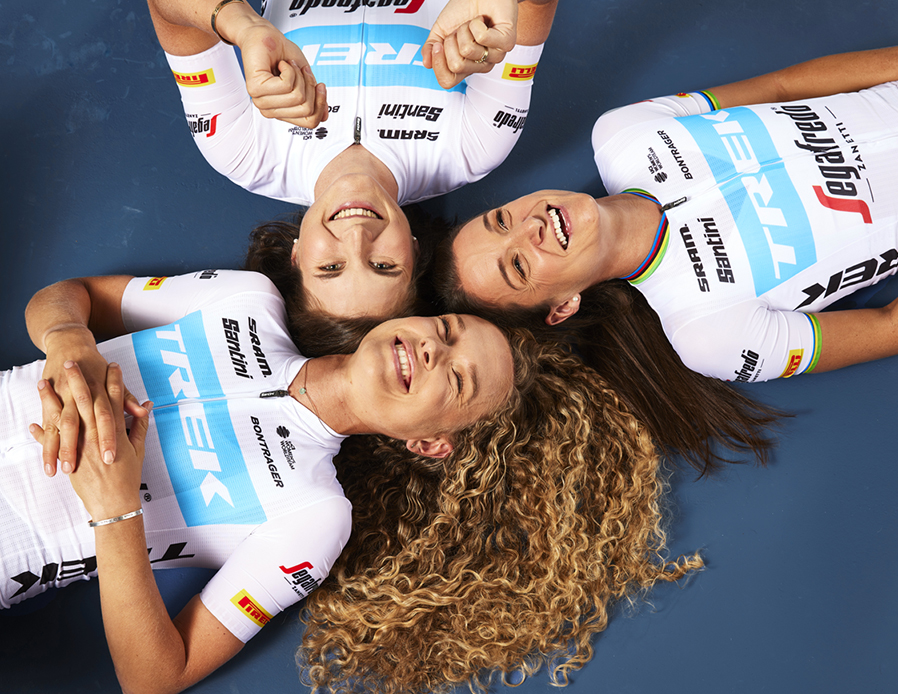
THE MORE WOMEN CYCLE, THE MORE EQUAL WE BECOME
Women’s cycling is rising significantly, in a path that is not always easy. We are witnesses of this extraordinary change and we asked a journalist who, also attracted by the charm of the bicycle, described to us the current international landscape of women’s cycling.
A couple of years after I had bought my first road bike, I decided to join a local cycling club. I felt excited about - the prospect of getting better at the sport I had so quickly fallen in love with, meeting new people and making new friends. Trying to calm my nerves, I rode to the first Sunday club ride start spot, and although I had been cycling long enough to notice I was somewhat of a minority, what I was facing was striking. The club I entered was one of the largest in the city and yet, on this Sunday, and the few after, I was one of the maximum three women cyclists, whereas there were dozens of men around.
We’re looking for gender equality
As much as we wished it was otherwise, cycling is not a very gender-equal sport and my experience is just one example of it. Men are still dominant in the professional cycling field, and even most everyday cyclists are men. I don’t think it’s always a negative thing - but it can easily make women feel like they don’t “fit in”. And although there are increasingly more women centred cycling clubs and organised rides, that doesn’t mean that I would not like to see even more women take up cycling. We need to see more representation of women, and we, regardless of our gender, need to recognise that we can all be cyclists, at the pro level or just pottering about the local trails if we want to. We have the right to do that. 2022 was a year that simply reinforced the need for this. It was remarkable year for women’s cycling - we witnessed the return of Tour de France Femmes, Trek Segafredo’s Lizzy Deignan was awarded an MBE for the work she’s done for women’s cycling and I felt that women’s cycling was gaining significant momentum. But it had not happened overnight, and didn’t mean more change is not needed.

Pivotal moments for women’s cycling
Leading up to 2022, we’ve seen some leaps in the rights and coverage of women’s cycling; the Women’s World Tour calendar has exploded with the number of race days rising from 34 in 2016 to over 80 in 2023. The dramatic rise shows just what hot property women’s racing has become, but yet it’s still far from the prestige that men’s cycling enjoys. Let’s start with some history from the recent years focusing on the professional cycling field. In 2018, UCI (the international governing body for cycling) was paving the way for more equal pay in the professional cycling with the introduction of a two-tiered salary system for women’s cycling. This meant that there was now a set minimum salary (30,000€) for the WorldTour women riders. While there is still a long way to go for equal pay, this was a step to the right direction.
Becoming a mom shouldn’t be an obstacle
Another aspect specific for the women’s field is maternity leave. In 2018 Lizzie Deignan announced she is expecting a baby and after not finding an agreement with her current team about return to racing, she transferred to another team. Trek-Segafredo signed her when she was six months pregnant, and in 2019 she returned to racing at the top level. While she wasn’t the first female rider to have done that, the way Trek-Segafredo supported her was unprecedented. Yet it was only in 2020 when UCI introduced a first-ever maternity leave clause to Women’s WorldTeams. This meant that professional women cyclists would be allowed three months' maternity leave while being entitled to full salary, followed by an additional five months at half of their salary. However, the maternity leave clause leaves out those that are self-employed professional cyclists and those who race in ProTour or Continental teams. The minimum salary and rights have mostly been introduced to the very top level - and even there their implementation is not always a given. Trek-Segafredo’s Deignan has since given birth to her second child, and still she extended her contract for two years with the team, well beyond the pregnancy and maternity leave.

The media coverage
Then we have coverage. In 2020, the Women’s WorldTour included 21 road cycling events, when the men’s World Tour had 36 races. These races are not necessarily broadcasted fully, as the UCI only stipulates that there needs to be a minimum of 45 minutes of live coverage must be shown for a race to qualify for Women’s WorldTour status. Otherwise there will be sanctions. This rule has hugely improved the number of viewers for the races, which then raises the profile of the sport and brings in more sponsors. The gap between womens and mens cycling still exists, in pay and in coverage, but it is getting narrower each year, which is amazing to witness.

The future - making cycling part of everyday life
It’s clear that cycling is picking up the pace in gender equality, but we still have a long way to go, and we must not forget that professional cycling is only one aspect of it. Everyday cycling, making our everyday journeys on bikes, is essential for cycling to become an integrated part of our societies - for everyone, not just for the few. In some of the leading cycling countries in the world - the Netherlands, Denmark and Germany - women make up over half of those cycling. When you look at the countries that produce the most world-class cyclists, the same countries are topping the lists. A big part of gender equality is freedom and I believe that regardless of who you ask, cycling is a medium for achieving freedom. It allows one to travel alone, without relying on timetables, access to a car, without an excessive financial burden and, at the same time, improves one's health both physically and mentally. Cycling can act a way to express that freedom at multiple levels, with well-designed cycling clothing only one aspect of it.
The right wardrobe
Clothing can also be a great way to showcase messages for equality. The kit that the Trek-Segafredo team wore for the 2022 Tour de France was made with a powerful message in mind; it was identical for both men and women with a design that brought together the two colours chosen for the teams. The visual was a horisontal interweaving of the men’s signature red and the women’s signature blue: these colors remained separated to indicate the two different identities but also meld at the centre to represent the equal status and value of the two teams.

Cycling inspires social changes
The more we see women cycling, the more young girls will see it as the norm, something they’d like to do as well. I used to live next door to a mother and daughter. The young daughter was always very curious about my bike and one day when she was once again staring at it (telling her mom how nice it looks) she asked if she could carry it up the stairs with me. As small as this might seem, I felt for the first time that I could inspire someone to cycle. And when I saw the women of Tour de France Femmes ride past in Paris, I felt inspired like I had never been before. I have never been following professional cycling very closely but seeing the women whizz past me, every single one so strong and resilient, I was quickly sucked into the triumph of it. The more women there are cycling, whether along Champs-Élysées on the television or riding to the shops in the neighbourhood, the more other girls and women see themselves doing the same, and it all matters.

